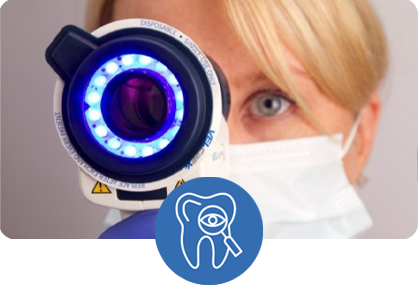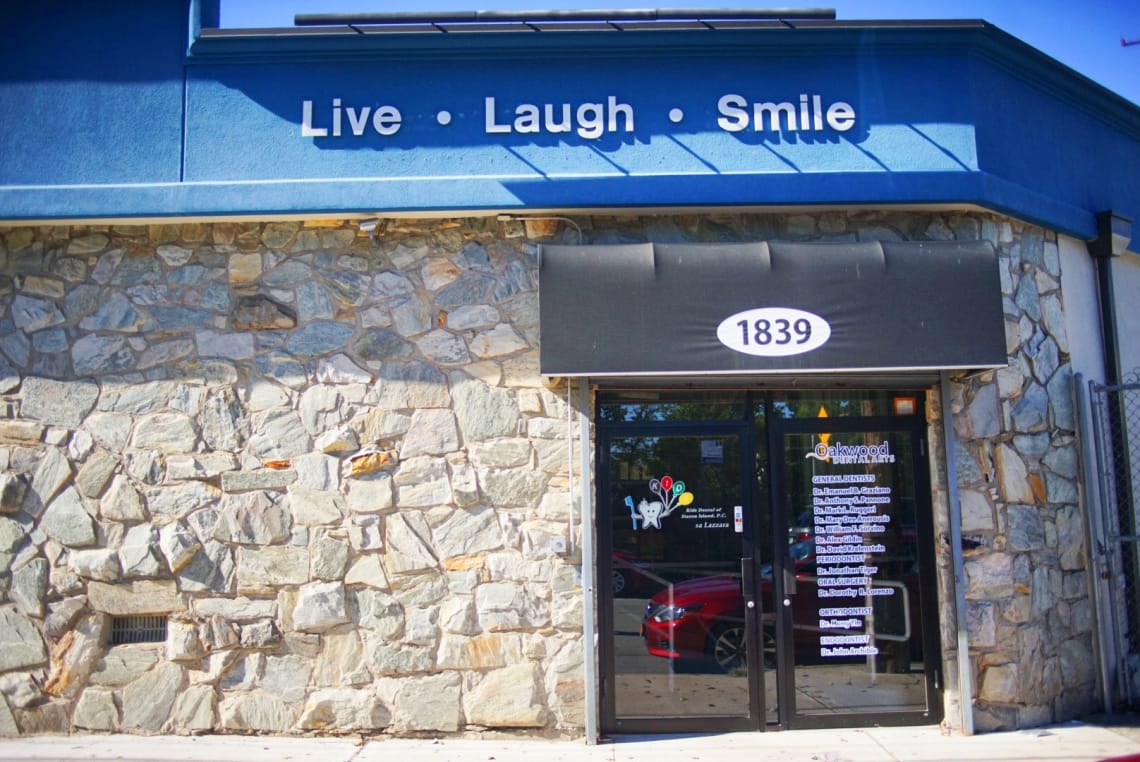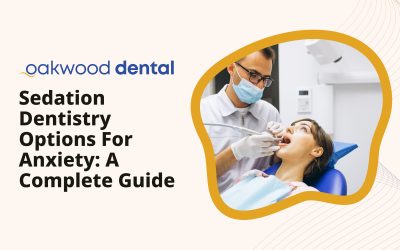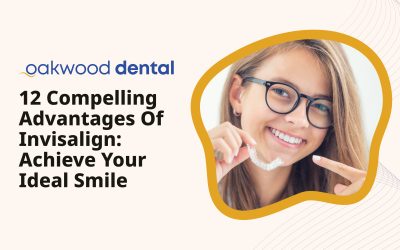Key Takeaways
- Early detection of oral cancer significantly improves treatment outcomes and survival rates, increasing 5-year survival rates from 20-30% to 80-90%
- VELscope technology uses fluorescent light to detect abnormalities not visible to the naked eye, identifying cellular changes before they become clinically apparent
- Regular dental checkups with oral cancer screenings are essential for prevention and should be scheduled every 6 months
- Even patients without traditional risk factors should receive routine screenings as oral cancer can affect anyone
- Oral cancer screenings are quick, painless, and can be performed during regular dental visits without additional appointments
Understanding Oral Cancer and the Importance of Early Detection
Oral cancer is a serious and potentially life-threatening condition that affects thousands of people annually in the United States and worldwide. When detected early in its development, the chances of successful treatment and complete recovery increase dramatically, often by more than 50% compared to late-stage diagnosis. At Oakwood Dental Clinics, we emphasize the importance of regular oral cancer screenings as part of your comprehensive dental care, considering them as essential as cleanings and cavity checks for maintaining optimal health.
Early detection is crucial because oral cancer can be particularly aggressive and spread quickly to surrounding tissues and lymph nodes. When caught in its initial stages, treatment is typically less invasive, more effective, and has significantly fewer side effects on speech, swallowing, and facial appearance. Unfortunately, many cases of oral cancer are discovered only after the disease has progressed to advanced stages, making treatment more difficult, more expensive, and substantially reducing five-year survival rates from approximately 80-90% for early-stage cases to a concerning 20-30% for advanced cases. This dramatic difference in outcomes underscores why regular screening is so vital.
Regular dental checkups provide an opportunity for professional assessment of your oral health, including screening for oral cancer. These screenings are quick, painless, and can be integrated into your routine dental visits without requiring additional appointments or significant extra time. Our dental professionals are thoroughly trained to identify suspicious areas that might indicate precancerous or cancerous conditions, including subtle changes in tissue color, texture, or integrity that might escape notice during self-examination. We utilize both traditional visual and tactile examination methods as well as advanced technology to ensure comprehensive assessment.
The connection between oral health and overall health is well-established through extensive research, making regular dental visits essential not just for your teeth and gums, but for your entire well-being. Oral cancer screenings represent a critical component of this holistic approach to healthcare. Studies have demonstrated links between oral health issues and systemic conditions such as cardiovascular disease, diabetes, respiratory infections, and even certain neurological disorders. By maintaining vigilant monitoring of your oral health through regular screenings, you’re taking an important step toward protecting your overall health and longevity.
Advanced Oral Cancer Detection Technology: VELscope
At Oakwood Dental Clinics, we utilize state-of-the-art technology to enhance our ability to detect oral cancer in its earliest stages, often before visible symptoms appear. The VELscope system represents a significant advancement in oral cancer screening technology, providing our dentists with capabilities that far exceed traditional visual examination methods. This FDA-approved device has revolutionized how dental professionals approach early cancer detection, making it possible to identify suspicious tissue changes that would otherwise remain undetected until more advanced stages.
The VELscope system uses specialized light technology to identify abnormal tissue that might not be visible during a standard visual exam. This non-invasive screening tool allows our dentists to see changes in tissue at the cellular level, potentially detecting cancer before it becomes visible to the naked eye. The technology works on the principle of tissue fluorescence visualization, where the VELscope emits a specific wavelength of blue light that causes natural fluorophores in healthy oral tissue to emit a green fluorescence. Abnormal or potentially cancerous tissues appear dark against this background due to their different molecular composition and reduced fluorescence properties.
The procedure is simple and quick, typically adding only about two minutes to your regular dental examination:
- Our dental professional will examine your mouth using a traditional visual inspection, checking for any obvious abnormalities or concerning areas
- The VELscope handpiece emits a safe blue light into the oral cavity, requiring no special preparations, rinses, or stains
- Normal tissue will fluoresce (glow) in distinctive patterns that our trained professionals recognize as healthy tissue architecture
- Abnormal tissue appears dark in comparison to the healthy tissue, creating a visual contrast that helps identify areas of concern
- Any suspicious areas can be documented through the VELscope’s photo documentation system for further evaluation, monitoring, or referral to specialists
This advanced technology significantly improves our ability to detect oral cancer early, when treatment outcomes are most favorable. Research has shown that VELscope examinations can detect abnormal tissues that traditional visual examinations miss, including precancerous changes that have not yet developed into clinically apparent lesions. The VELscope examination takes only a few minutes but can make a critical difference in early diagnosis, potentially saving lives through timely intervention. As part of our commitment to comprehensive care, we incorporate this technology into our standard screening protocols for optimal patient protection.
The Oral Cancer Screening Process
Oral cancer screenings are a vital part of comprehensive dental care, serving as a frontline defense against this serious condition. At Oakwood Dental Clinics, we recommend including an oral cancer screening as part of your regular dental checkup, ideally every six months. The screening process is quick, typically taking less than five minutes, completely painless, and could potentially save your life by identifying concerning changes before they progress to advanced disease stages.
During a standard oral health examination, our dental professionals will conduct a thorough assessment following established protocols designed to maximize detection of any abnormalities. The process includes multiple components to ensure comprehensive evaluation of all oral tissues:
- Examine your face, neck, lips, and mouth for any signs of asymmetry, discoloration, swelling, or ulceration, paying particular attention to areas where oral cancers commonly develop such as the tongue, floor of mouth, and soft palate
- Feel the tissues of your mouth and throat to detect any unusual lumps, masses, or areas of hardness that might indicate abnormal tissue growth beneath the surface
- Inspect the inside of your cheeks, roof of your mouth, tongue, and under your tongue for white or red patches or sores, which are common presentations of precancerous and cancerous lesions
- Utilize the VELscope technology for enhanced visualization of tissue abnormalities that might not be apparent during the conventional visual examination
- Assess the lymph nodes in your neck for any enlargement or tenderness, which could indicate the spread of cancerous cells
If any suspicious areas are identified, we may recommend monitoring the area over time to check for changes, performing a brush test to collect cells for analysis, or referring you to a specialist for a biopsy if necessary. Our approach is thorough but conservative, balancing the need for vigilance with avoiding unnecessary procedures. We carefully document all findings to establish a baseline for comparison during future examinations, allowing us to identify even subtle changes over time.
Regular teeth cleaning appointments provide an excellent opportunity for these screenings. We recommend scheduling dental checkups every six months, which allows us to monitor your oral health consistently and detect any changes early. This frequency is optimal for most patients, though those with identified risk factors or previous abnormalities may benefit from more frequent evaluations. Remember that these screenings are quick, non-invasive, and integrate seamlessly into your regular dental visits, providing significant health benefits without additional inconvenience.
Risk Factors and Warning Signs of Oral Cancer
Understanding the risk factors and warning signs of oral cancer can help you make informed decisions about your oral health care and recognize when to seek professional evaluation. Knowledge of these factors empowers you to take preventive measures and remain vigilant about changes in your oral health that might warrant attention. Early recognition of potential warning signs can lead to prompt evaluation and significantly improve outcomes if cancer is present.
Common Risk Factors
Several factors can increase your risk of developing oral cancer, with some having much stronger associations than others. Understanding these risk factors can help you assess your personal risk profile and make appropriate lifestyle modifications:
- Tobacco use in any form (cigarettes, cigars, pipes, chewing tobacco, snuff) – this is perhaps the most significant modifiable risk factor, with tobacco users having a 5-10 times higher risk than non-users
- Heavy alcohol consumption, especially when combined with tobacco use – this combination has a synergistic effect, multiplying risk substantially beyond either factor alone
- Human papillomavirus (HPV) infection, particularly HPV-16, which has been linked to a rising incidence of oropharyngeal cancers, especially in younger populations
- Excessive sun exposure to the lips, which can lead to cancer similar to skin cancer on other exposed areas
- Family history of cancer, particularly oral cancer, which may indicate genetic predisposition
- Poor diet lacking in fruits and vegetables, which contain protective antioxidants and nutrients
- Weakened immune system due to medications, medical conditions, or HIV/AIDS
- Age (most cases occur in people over 40, with the average age at diagnosis being 62)
- Gender (men are twice as likely as women to develop oral cancer, though this gap is narrowing)
- Previous history of oral cancer, which increases the risk of developing second cancers
However, it’s important to note that oral cancer can affect anyone, even those without obvious risk factors. In fact, approximately 25% of oral cancer cases occur in people who don’t smoke and have no other significant risk factors. This is why regular screenings are recommended for all adults, regardless of perceived risk level. The changing demographics of oral cancer, particularly with the rise of HPV-related cases, means that even young, otherwise healthy individuals should remain vigilant.
Warning Signs to Watch For
Be aware of these potential warning signs and contact your dentist if you experience any of the following symptoms, especially if they persist for more than two weeks without improvement:
Persistent sores, ulcers, or irritations that don’t heal within two weeks are one of the most common presentations of oral cancer. You might also notice red or white patches in your mouth (erythroplakia or leukoplakia), which can indicate precancerous changes. Pain, tenderness, or numbness in your mouth or lips that persists without obvious cause is another warning sign to pay attention to.
If you feel a lump or thickening in your cheek when pressing on the tissue, this could be cause for concern. Difficulty chewing, swallowing, speaking, or moving your jaw or tongue might indicate involvement of muscles or nerves. A change in the way your teeth fit together when you close your mouth or problems wearing dentures that previously fit well should also prompt a dental visit.
Other warning signs include a chronic sore throat or feeling that something is caught in your throat that doesn’t resolve with antibiotics or other treatments. Hoarseness or change in voice quality that lasts more than two weeks, ear pain without hearing loss or evidence of infection (which can be referred pain from oral cancers), unexplained bleeding in the mouth not related to injury, tooth extraction, or gum disease, and unexplained weight loss associated with any of these symptoms all warrant professional evaluation.
Early detection through awareness of these signs and regular professional screenings at our dental practice gives you the best chance for successful treatment if oral cancer is present. Remember that many of these symptoms can also be caused by less serious conditions, but persistent issues warrant professional evaluation to rule out cancer. When caught early, oral cancer treatment is not only more effective but typically less invasive and disfiguring, preserving both function and appearance to a much greater degree.
Benefits of Early Oral Cancer Detection
The advantages of detecting oral cancer in its early stages cannot be overstated. Early detection dramatically improves treatment outcomes and quality of life for patients, making the difference between minor treatment with excellent prognosis and major interventions with uncertain outcomes. The contrast in both medical approach and patient experience between early and late detection scenarios is stark and compelling.
Key Benefits of Early Detection
Higher Survival Rates: When oral cancer is detected in its earliest stages, the five-year survival rate can be as high as 80-90%. This drops dramatically to around 20-30% when diagnosed in advanced stages. This stark difference represents one of the most significant survival rate disparities among all major cancers, highlighting the critical importance of early detection. Early-stage cancers are typically localized, allowing for complete removal before metastasis occurs.
Less Invasive Treatment: Early-stage oral cancer typically requires less aggressive treatment, which may mean smaller surgical procedures, lower doses of radiation, potentially avoiding chemotherapy altogether, and preservation of more healthy tissue. Stage I oral cancers might be treated with simple excision or minor surgery, while advanced cases often require radical neck dissection, extensive reconstruction, and combined treatment modalities that significantly impact quality of life. The difference in treatment approaches represents not just medical considerations but profound implications for the patient’s experience and recovery.
Reduced Treatment Complications: Less extensive treatment generally results in fewer side effects and complications, including reduced impact on speech and swallowing, better preservation of facial appearance, and lower risk of treatment-related health issues. Advanced oral cancer treatments can lead to permanent speech impairment, difficulty eating and swallowing, facial disfigurement requiring reconstructive surgery, and long-term complications from radiation such as dry mouth, bone damage, and increased risk of dental problems. Early detection helps avoid these life-altering consequences.
Better Quality of Life: Patients diagnosed early generally experience shorter recovery times, less pain during treatment and recovery, better functional outcomes for speaking and eating, and reduced psychological impact. The emotional and psychological burden of extensive cancer treatment and potential disfigurement should not be underestimated. Early detection preserves not just physical function but also social confidence, mental well-being, and overall life satisfaction. Patients with early-stage disease typically return to normal activities much more quickly and completely.
Cost-Effective Care: Early treatment is typically less expensive than treating advanced cancer, requiring fewer hospital stays, less extensive surgical procedures, reduced need for reconstructive surgeries, and fewer medications for symptom management. The economic burden of advanced oral cancer can be substantial, including not just direct medical costs but also lost productivity, caregiver expenses, and ongoing supportive care. Studies suggest that treatment costs for advanced oral cancer can be 3-4 times higher than for early-stage disease, representing a significant financial benefit to early detection beyond the obvious health advantages.
At Oakwood Dental Clinics, our team is committed to providing comprehensive oral cancer screenings using advanced technology like VELscope to ensure the earliest possible detection of any abnormalities. We view these screenings not as optional additions but as essential components of responsible dental care, potentially making the difference between simple treatment with excellent outcomes and complex interventions with uncertain results.
Integrating Oral Cancer Screenings into Your Dental Care Routine
Making oral cancer screenings a regular part of your dental care routine is simple and could potentially save your life. At Oakwood Dental Clinics, we make it easy to incorporate these essential screenings into your regular dental visits, ensuring comprehensive protection without additional appointments or significant time commitments. Integrating these screenings into your existing dental care regimen represents one of the most efficient and effective preventive health measures available.
How to Include Oral Cancer Screenings in Your Dental Care
Schedule Regular Dental Checkups: We recommend visiting us every six months for a comprehensive dental examination that includes an oral cancer screening. Regular dental checkups are the foundation of good oral health and early detection of any issues. This twice-yearly schedule allows us to monitor changes over time and detect subtle abnormalities that might develop between visits. For patients with identified risk factors such as tobacco use or previous oral lesions, more frequent visits may be recommended to ensure optimal monitoring.
Request VELscope Screening: Ask specifically about our VELscope screening during your next appointment. This advanced technology significantly enhances our ability to detect oral abnormalities in their earliest stages, often before they become visible to the naked eye or symptomatic. The VELscope examination adds only a few minutes to your regular dental visit but provides substantially increased detection capabilities. Our office has invested in this technology specifically to provide our patients with the highest standard of preventive care available in modern dentistry.
Update Your Medical History: Keep us informed about changes in your health, medications, or lifestyle factors that might affect your risk for oral cancer. Certain medical conditions, treatments, and medications can influence both your risk profile and the appearance of oral tissues. Accurate and current health information helps us tailor our examination approach and interpret findings appropriately. Be particularly sure to inform us about changes related to immune function, new medications, or treatments like radiation therapy that might affect oral tissues.
Perform Self-Examinations: Between dental visits, conduct monthly self-examinations of your mouth, looking for unusual sores or color changes, lumps or thickened areas, persistent pain or tenderness, and changes in the fit of dentures or how your teeth come together. While self-examination cannot replace professional screening, it provides an important layer of ongoing monitoring. We can demonstrate proper self-examination techniques during your visit to ensure you know what to look for and how to thoroughly check all areas of your mouth. Report any concerning findings promptly rather than waiting for your next scheduled appointment.
Address Risk Factors: Work with your healthcare providers to reduce modifiable risk factors, such as quitting tobacco use, reducing alcohol consumption, improving diet and nutrition, and using sun protection on your lips. Risk reduction is a powerful complement to screening in preventing oral cancer. We can provide resources and referrals to help you address these factors effectively. Remember that eliminating tobacco use alone can reduce your oral cancer risk by up to 80%, representing one of the most significant preventive measures available.
Our professional dental team is dedicated to providing comprehensive care that includes thorough oral cancer screenings. We make these screenings quick, comfortable, and convenient as part of your regular dental visits. By integrating these essential health checks into your existing dental care routine, you receive maximum protection with minimal additional effort, exemplifying efficient and effective preventive healthcare.
Patient Education and Prevention Strategies
Education and prevention are powerful tools in the fight against oral cancer. Understanding the risks and taking proactive steps can significantly reduce your chances of developing this disease. At Oakwood Dental Clinics, we believe that informed patients make better health decisions, which is why we prioritize education alongside clinical care in our comprehensive approach to oral health.
Effective Prevention Strategies
Keeping your mouth healthy is your first defense against oral cancer. Brush your teeth twice a day with fluoride toothpaste and floss daily to remove food and plaque from between your teeth. You can also use mouthwash to kill germs. Good oral health helps keep your mouth tissues healthy and reduces inflammation that might increase cancer risk. Some research shows that people with gum disease might have a higher chance of getting oral cancer, maybe because of ongoing inflammation or changes in the bacteria in your mouth. Use a soft toothbrush so you don’t damage your gums or miss signs of problems.
If you use tobacco products, try to quit. Smokers are six times more likely to get oral cancer than non-smokers. All types of tobacco are risky – cigarettes, cigars, pipes, and chewing tobacco. We can help you find programs to quit smoking that use methods proven to work, like support groups and sometimes medicine. Your risk starts going down as soon as you quit, and after about 10 years without tobacco, your risk gets close to someone who never smoked.
Drinking too much alcohol is another big risk factor for oral cancer, especially if you also use tobacco. If you drink alcohol, try to limit it – no more than one drink a day for women and two for men. Your risk goes up a lot with heavy drinking, and if you both smoke and drink heavily, your risk is much higher than just adding the two risks together. All alcoholic drinks (beer, wine, liquor) seem to have similar risks when you drink the same amount of alcohol.
Eat plenty of fruits and vegetables to help protect against cancer. These foods contain antioxidants and nutrients that may help reduce cancer risk by fighting cell damage, supporting your immune system, and helping healthy cell growth. Try to eat at least five servings of fruits and vegetables every day, especially deeply colored ones like berries, dark leafy greens, and orange vegetables, which have more protective compounds. Research has found that vitamins A, C, and E, plus other plant compounds, may help protect against oral cancer.
Protect your lips from the sun by using lip balm with SPF 30 or higher and limiting direct sun exposure, especially between 10 AM and 4 PM. Reapply sun protection after eating or drinking. Cancer most often affects the lower lip because it gets more sun exposure, and people with lighter skin are at higher risk. Wearing a hat with a wide brim gives you extra protection beyond just sunscreen.
Be aware of HPV risks. Human papillomavirus (HPV), especially type HPV-16, has been linked to certain kinds of oral cancer, particularly in the throat area. Talk to your doctor about HPV vaccination and practice safe sex to reduce your risk of infection. The HPV vaccine works best when given before possible exposure to the virus, usually during the teen years, but it might still help adults who haven’t been infected with the targeted HPV types. The increasing number of HPV-related oral cancers, especially in younger people without traditional risk factors like smoking, makes understanding this risk especially important.
Stay informed about the latest dental news and research on oral cancer prevention and detection. Knowing more helps you make better health decisions and recognize new screening and prevention methods that might help you. Our dental office regularly updates our educational materials based on new research to make sure you get the most current and evidence-based care available.
By combining these prevention strategies with regular professional screenings, you significantly improve your chances of avoiding oral cancer or detecting it at its earliest, most treatable stage. Prevention and early detection work together, creating a comprehensive approach to oral cancer protection that works much better than either strategy alone. We believe patient education is a cornerstone of effective preventive care and are committed to providing you with the knowledge and tools you need to protect your oral and overall health.
Conclusion: Taking Action for Your Oral Health
Early detection of oral cancer can make a life-saving difference in treatment outcomes. By understanding the importance of regular screenings and knowing the warning signs, you can take proactive steps to protect your health. The dramatic difference in survival rates between early and late-stage oral cancer—80-90% versus 20-30%—underscores the critical importance of vigilance and regular professional assessment.
At Oakwood Dental Clinics, we are committed to providing comprehensive oral health care that includes state-of-the-art oral cancer screening. Our VELscope technology enhances our ability to detect abnormalities that might not be visible during a standard examination, potentially catching oral cancer in its earliest, most treatable stages. This advanced screening method represents our commitment to utilizing the best available technology to protect your health and provide the highest standard of preventive care possible.
We encourage all our patients to schedule regular dental checkups that include oral cancer screenings, maintaining a six-month interval that allows for optimal monitoring and early detection. Be aware of the risk factors and warning signs of oral cancer, paying particular attention to persistent changes in your mouth that don’t resolve within two weeks. Perform monthly self-examinations between dental visits, using good lighting and a mirror to check all areas of your mouth, including under your tongue and the sides and base of your tongue where many oral cancers begin. Make healthy lifestyle choices to reduce risk factors, including tobacco cessation, moderate alcohol consumption, sun protection, and a diet rich in fruits and vegetables. Don’t hesitate to ask questions about oral cancer prevention and detection during your visits—our team is always ready to provide information and address your concerns.
Remember that early detection is your best defense against oral cancer. Don’t wait for symptoms to appear – preventive screenings are quick, painless, and could save your life. The few minutes spent on screening during your regular dental visit represent one of the most valuable investments you can make in your long-term health and well-being. Unlike many other cancers, oral cancer can often be detected through visual and tactile examination, making regular dental visits a particularly effective setting for early detection.
Contact Oakwood Dental Clinics today to schedule your comprehensive dental examination, including an oral cancer screening with our advanced VELscope technology. Your oral health is an essential component of your overall well-being, and we’re here to help you protect it through a combination of cutting-edge technology, professional expertise, and personalized care tailored to your specific needs and risk factors. By taking this simple step, you’re making a significant investment in your health that could yield life-saving returns.

 718-979-2121
718-979-2121












